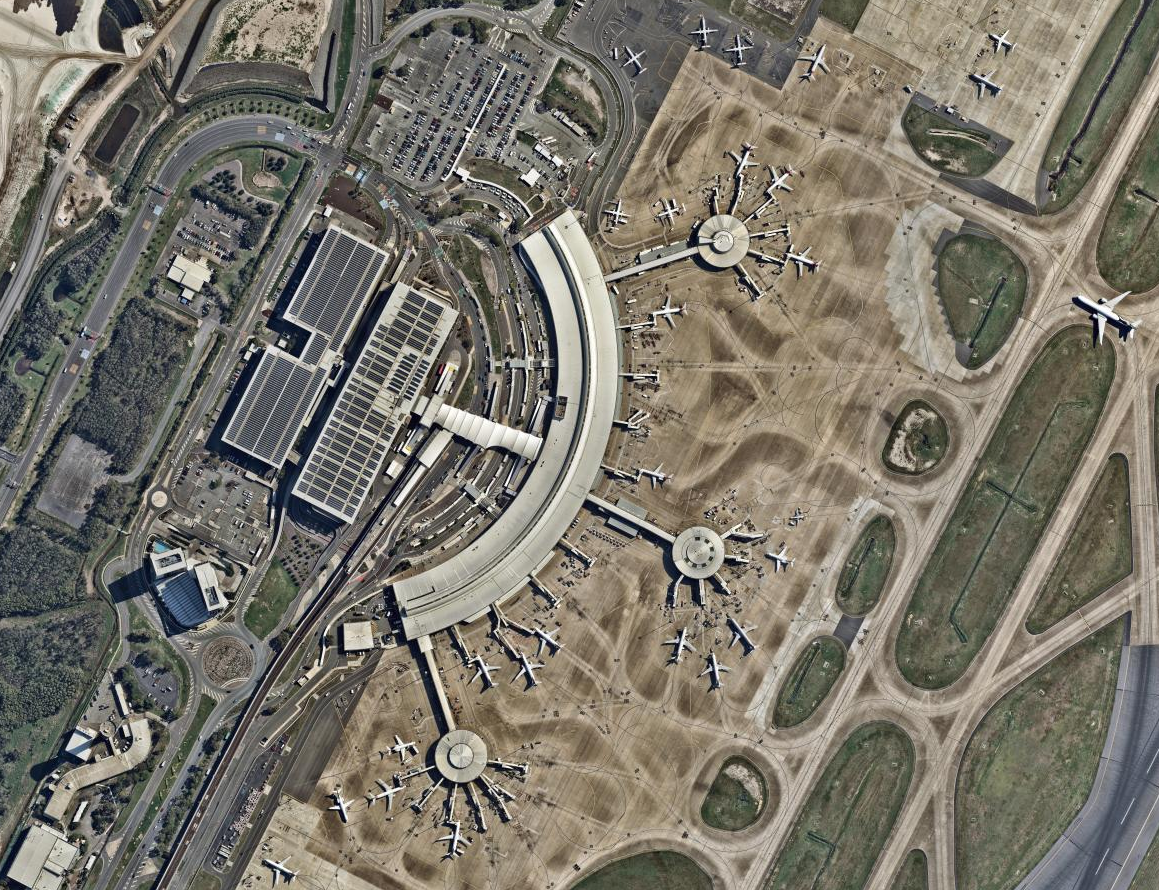Reflecting a global trend in which airports around the world are looking to reduce their carbon footprint, Brisbane Airport has switched on a 5.725MW solar PV installation. While it has been operational since end of 2018, the system has now reached practical completion including all approvals from authorities, as announced by the local EPC contractor, Epho Commercial Solar Power, which developed the project in collaboration with Shakra Energy.
A total of 20,937 solar panels used in this project were spread across six sites at the airport with some mounted on the ground and others on rooftops. Chinese module manufacturer Trina Solar provided the panels for five of the six sites.
“If you lay the 20,937 solar panels flat, they take up more than twice the size of the Melbourne Cricket Ground,” says Axel La Toison, Senior Project Manager at Epho. “Brisbane Airport is the most challenging project we have done, but it puts us in good stead for other airport and large commercial & industrial solar projects in future as we have experience dealing with the various authorities.”
The challenges were reflected in the number of stakeholders and their unique requirements with regards to: safety and security, height restrictions, aesthetics, etc. Since commercial airports have restricted areas, bringing in equipment and personnel was also no easy job. But, one of the most demanding aspects was the amount of cabling involved. “At Brisbane Airport, we installed over 200km of cables and built many substations to ensure the electrical infrastructure was suitable,” says La Toison.
One of the unique requirements that airports have is for the solar panels to have minimal glare. That is why Epho has chosen Trina as the main module supplier and its Honey TSM-PD05 panels, which have an anti-glare coating.
“Solar energy is very worthwhile for airports, because adopting solar is in line with the worldwide push, by organizations such as Airports Council International, to reduce airports’ carbon footprint,” Trina Solar country sales manager, Govind Kant, said. “Airports can reduce their dependence on the electricity grid considerably because they generally have a lot of land and rooftop space where solar panels can be installed.”
On top of that, airports’ energy consumption peaks during the day coinciding with the peak output from solar arrays. Announcing its $11 million investment last year, Brisbane Airport calculated that once fully operational, the solar installation will account for 18% of Brisbane Airport Corporation’s direct electricity consumption or 6% of the total airport consumption.
This content is protected by copyright and may not be reused. If you want to cooperate with us and would like to reuse some of our content, please contact: editors@pv-magazine.com.









1 comment
By submitting this form you agree to pv magazine using your data for the purposes of publishing your comment.
Your personal data will only be disclosed or otherwise transmitted to third parties for the purposes of spam filtering or if this is necessary for technical maintenance of the website. Any other transfer to third parties will not take place unless this is justified on the basis of applicable data protection regulations or if pv magazine is legally obliged to do so.
You may revoke this consent at any time with effect for the future, in which case your personal data will be deleted immediately. Otherwise, your data will be deleted if pv magazine has processed your request or the purpose of data storage is fulfilled.
Further information on data privacy can be found in our Data Protection Policy.